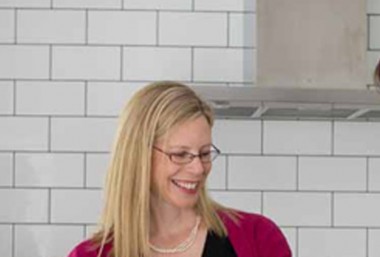The dearth of fresh, wholesome and classy desserts on New Zealand's supermarket shelves was the kick that took marketer Christie McCarthy and food technologist Julia Crownshaw to start up Dollop Puddings in 2009.
Now the two foodies and their team hand-craft products such as Chocolate Molten Torte, Sticky Date Pudding with Butter Toffee Sauce and Drizzly Chocolate Ganache. These delights stock the shelves of local supermarkets but are also exported to Australia.
A stand-out, the Vanilla Bean Custard won the Cuisine Artisan Award in 2010.
McCarthy says the company's philosophy is about using traditional baking techniques and lots of real ingredients such as real vanilla bean, real dark chocolate and real raspberries.
'It's quite simple really - when you use good ingredients and don't cheat, your products taste amazing.'
The traditional, handmade nature of their products does mean they're madly busy keeping up with demands in their bakery.
'It's nothing like the early days when it was just the two of us doing it, working full-time in corporate jobs,' McCarthy says. 'We'd leave our day jobs and head out to the bakery and make puddings until 2 o'clock in the morning on Tuesday nights, and be back at work in the morning. Luckily those times have passed and we've been able to get some staff on board.'
The growing operation has been impressively successful, thanks to something small businesses often neglect but which Dollop never left off the agenda: trade marking.
McCarthy, with a background in marketing, was quick to start sorting out the trade mark before the launch.
'I've always been involved with trade marks in my prior marketing roles, so I was aware of its importance,' she says. 'It was something Dollop was onto early in the piece.'
However, when investigating the Australian market, an internet search found the existence of earlier, similar trade marks in the names of other people - so they contacted AJ Park for advice on steering a course through the problem, since this was an area they wanted to get right.
AJ Park provided a more detailed search to make sure a variation, 'The Dollop Kitchen', was available to use and register, and then drafted up a broader specification as to what the trade mark covers - more than just the 'ready-made puddings, and condiments for puddings being egg custard' the pair had filed for.
'We added all sorts of wording covering things that they could easily expand into, but also products that they'd mind if someone else used the mark on,' says AJ Park.
The move to 'The Dollop Kitchen' also gave Dollop the scope to start exploring new categories outside of the 'pudding' category. McCarthy says it gives them more opportunity to grow the business outside of the original range, which fits very nicely with their strategy.
The trade mark's protection was extended to categories such as preserved and dried fruits, jellies, milk products, biscuits and the like, and also to less-related categories such as meat, fish, poultry and game.
'Often when clients file trade marks for themselves they file them for exactly what they do,' AJ Park says. 'Sometimes they miss things that they do but they haven't noted.'
'So when we look at a trade mark, we look at it much more in the round and we try and protect not only what they do now but what they might do in the future.'
Far too often, small start-ups don't file trade marks. 'Unfortunately what often happens is companies think that when they've registered the company name, they're protected, and that is certainly not the case.'
'You're not protected by a company name unless you're actually using it, and then only in relation to the area in which you're using it and in relation to those exact goods and services on which you're using it.'
Before launch, AJ Park recommends asking experts to see whether the trade mark is available before you end up infringing somebody else's rights. Moreover, by putting your trade mark on the register, it notifies third parties trying to register a similar mark.
'It is a bit of an expense up front, but if you don't do it, the cost of litigation for infringement is much more. It's good to start with one or two trade marks. Draw a line in the sand for your basic products and then you can always expand afterwards.'
McCarthy says she's found value in AJ Park's wider advice around legalities she and Crownshaw hadn't thought of, not just purely on the trade mark side of things.
They've just got that experience and they do it every day, so we had some really good advice and options on what is available - and they understood our financial position in terms of being a small business, which is very important.
- Christie McCarthy and Julia Crownshaw
Written by Deirdre Coleman, this case study was featured in #44 of Idealog. Photo courtesy of Jessie Casson.
